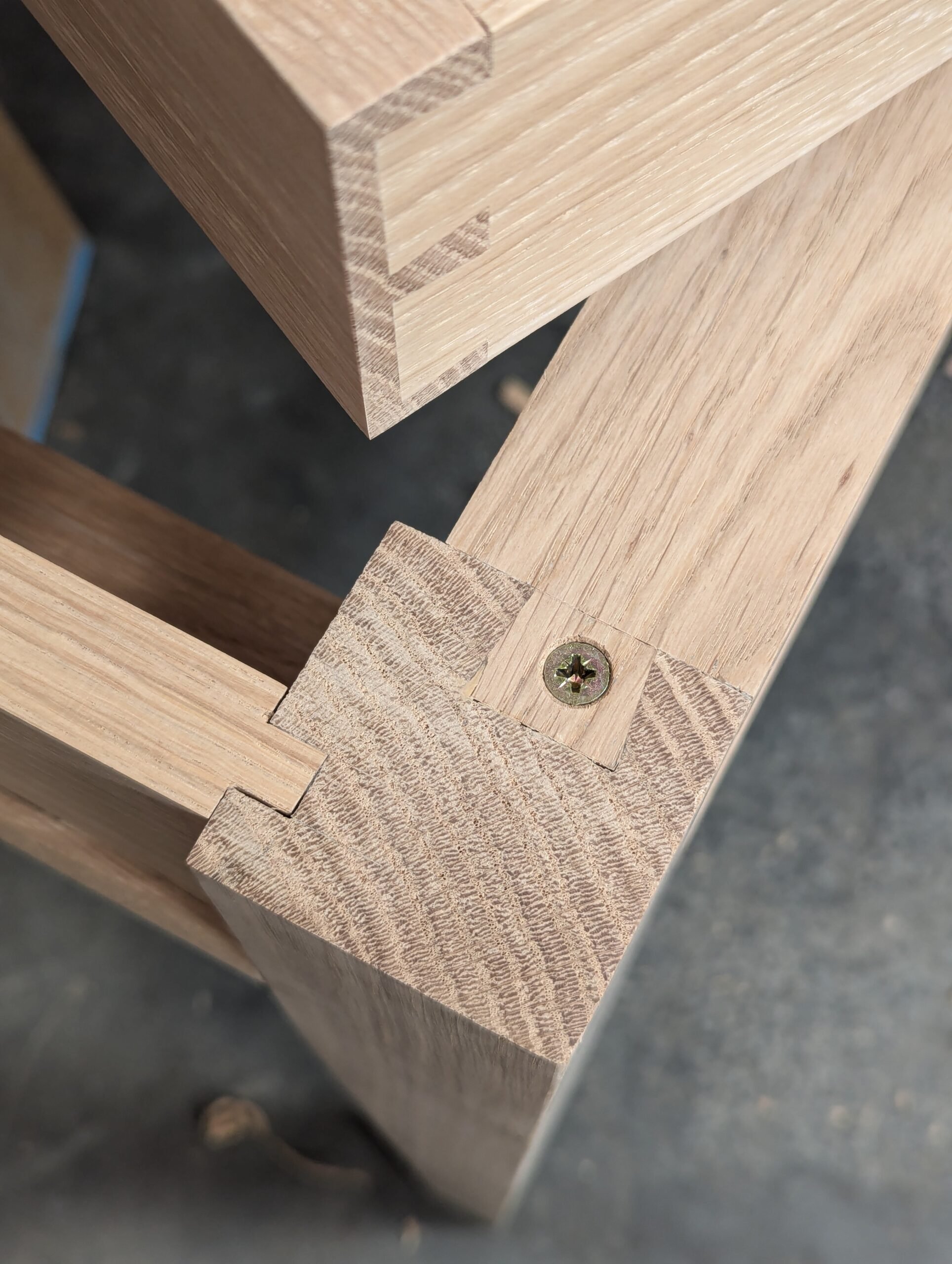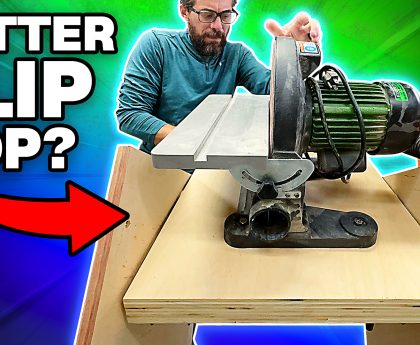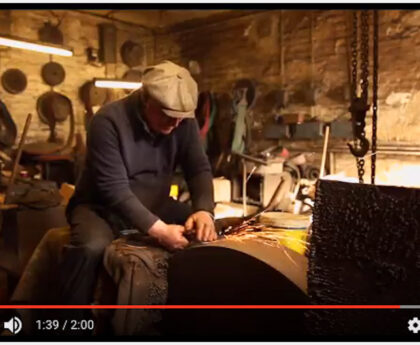…is it perfect?
How is perfect or perfection defined, and is it even definable? I often ask myself this question, being as I use the word so often in my day. Riding my bike here and there to do most of what I do outdoors, come to an obstacle, negotiate the potential issue to get through or past the crowd, the narrow passage extending leads that work against good dog management in public spaces and especially on designated cycle paths and if I arrive safely and then keep others safe as I go I often say to myself, “Perfect.”
I think, too, how we define perfection for ourselves instead of trying to paint with a broad brush inclusive of every definition is keenly important because customising it defines the satisfaction levels we strive for in terms of where to stop in our achieving. No one I ever met wants to turn out a sloppy area of work and certainly, we do not want nor intend to cut a sloppy joint. But in 90% of cases, if we fall short, it means that we willingly replace at least one part or another. But for some, filling in the gaps is OK for them. And I don’t altogether disallow gap filling, it will depend on how it’s done, with what, in what place and things like that. Of course, it is never our ambition, and neither would I always accept it. Sometimes, often in fact, a gap was not our fault. We must still however determine how we want to resolve it. What’s important is that when it is a fault in our delivery, we should always own it, never excuse it, reconcile it and learn from it. We all have a built-in capacity to make an error of judgement that with a single chisel slice or a saw cut to the wrong margin results in less than we wanted. But we also have an initial default reaction to deny it or hide it. I have learned many ways to fix injudicious cuts without trace. I could write the book, and perhaps might do so one of these days. But being a craftsman or woman is not, I repeat not, knowing how to reconcile your mistakes––I think that is just another of those cute sayings. Being a craftsman and craftswoman is about learning from any mistake made by ourselves or by others and minimising their number to the point that we just might minimise or even eliminate them altogether.

The margins are close to the line, as I don’t pare cut my tails or recess. What I saw cut is what I stop at–there is only need to pare cut if you are way, way off the line. It’s also important to know the compressibility of different woods and to know accordingly where the ‘give‘ will be. It’s not negative; think of it as internal compression with spring back. This way I get the best ‘tooth‘ for permanence in the glue-up. This tooth to all meeting surfaces is the intermix and thereby ‘lock’ of all surface fibres, something that is never spoken of, and I have never seen written or heard spoken of anywhere. Guessing, my guess, magnifies the structural strength of any type of joint but especially dovetails many times.

I have a habit of saying ‘perfect‘ when I seat a well-made joint or then too when I finish a project, install it and walk away from it. I should just say, ‘Done!‘ and even, perhaps, “Wow!” By saying my, in-context, “Perfect!“, it’s simply a declaration of having done my best and the result of hard and dedicated work warrants a period of rest and recovery for both myself and my workshop, but then too it could just as easily be an accidental outcome that just came together despite my humanness too. The project may be finished, but now it is time to put things back in the order `I started out with. However, and I have addressed this before, what is perfect anyway? I never take much stock when someone is a self-declared perfectionist. You know the person I speak of. They feel something and say out loud but might seem to be talking to themselves when they’re not, “Well, I’m too much of a perfectionist.”

I have known some friends who I might know with slightly odd eccentricities that work out of the ordinary and in their work they would never say ‘perfect‘ even though the work they just achieved was amazingly perfect work. They just achieved what was ordinary to them that no one else could have done, but perfect to them would not be verbally expressed. These individuals often work alone in realms where neurodiversity can really flourish without words like perfect. Sometimes they are genius… I mean pure genius. My personal perfect is declared after or in the middle of something that brought me true joy, and need not be perfect in execution or have an outcome one might describe as flawless.
I post occasional videos I record myself on my phone so that I can share the outcome of my experience. And I took some images of the outcome on my drawer below today to show you. I’ll let these speak for themselves but know that my joy was perfect despite myself.

At this shot angle, some gaps are not so clear, whereas others are. When the project is finally together, none of them will be seen. Is that good enough rather than perfect? I would still walk away feeling that many things are excellent. The joint holding is perfect and nothing will turn loose over the next 200 years, all of the visible shoulder lines will remain tight, I am sure, and the proportions of joint components are ideal throughout. The gaps seen on the outside are not necessarily so along the whole shoulder line of every joint. I and both satisfied and joyful. This is my state of mind.

On this dovetail, a fifteen-minute version, the shoulder line has a gap. This drawer is upside-down, so for the main part it will be unseen when the drawer is open except for the end grain at that bottom corner. I am not disappointed or ashamed, I am perfectly happy, and I choose the two words perfectly and happy to describe the truth of it. Will I fill this gap with a shim, coloured wax filler, coloured wood filler or sawdust and glue`? I would not do any of these in this case. Why? It would make me unhappy. Especially, would I never use sawdust and glue to hide a small flaw in my work. I’m actually happy and happier for it being there.

Here is a dovetail joint I made at the other end of the drawer front. It has a couple of gaps to it, but the joint is sound and feels good and firm as I pressed it together. I make no apologies to anyone for any of it. The two points on the right of the middle pin that show as gaps were not from flawed sawing or pare cutting, the fibres simply fell away after I removed the chisel from my last pare cut. The other pin gap in the upper corner was my work. Were I to judiciously cut a very fine slither of oak, I could make the gap disappear, but I won’t. It’s fine…perfect, in fact.

My drawer glides easily into its enclosure. I think it’s graceful, as wood on wood in its custom space should be. Pride can’t ever describe joy, nor would it ever run in tandem with it. Joy elevates in a totally different sphere, so I’m not too interested in any alternative, but I am interested in a drawer I built with care enough to make it last for a couple of hundred years. It’s well-made joints, the squaring and truing of my wood and the knifewalls I set my chisels to that determine the outcome, so it’s less about what is made and more about the how. Joy trumps pride a million times. Fulfilment works along the same lines and can only be had by the meticulous attention to detail. I enjoy fulfilment, and fulfilment comes in the joyfulness of both my working and the outcome. I’m coming into the sixty-first year of feeling joyful in the outcome of my days. Ten more of those years would suit me very well, and I don’t need to change a thing from being a working man working with his own hands and believing in his own vocationalism and the vocationalism of existing and future generations.




